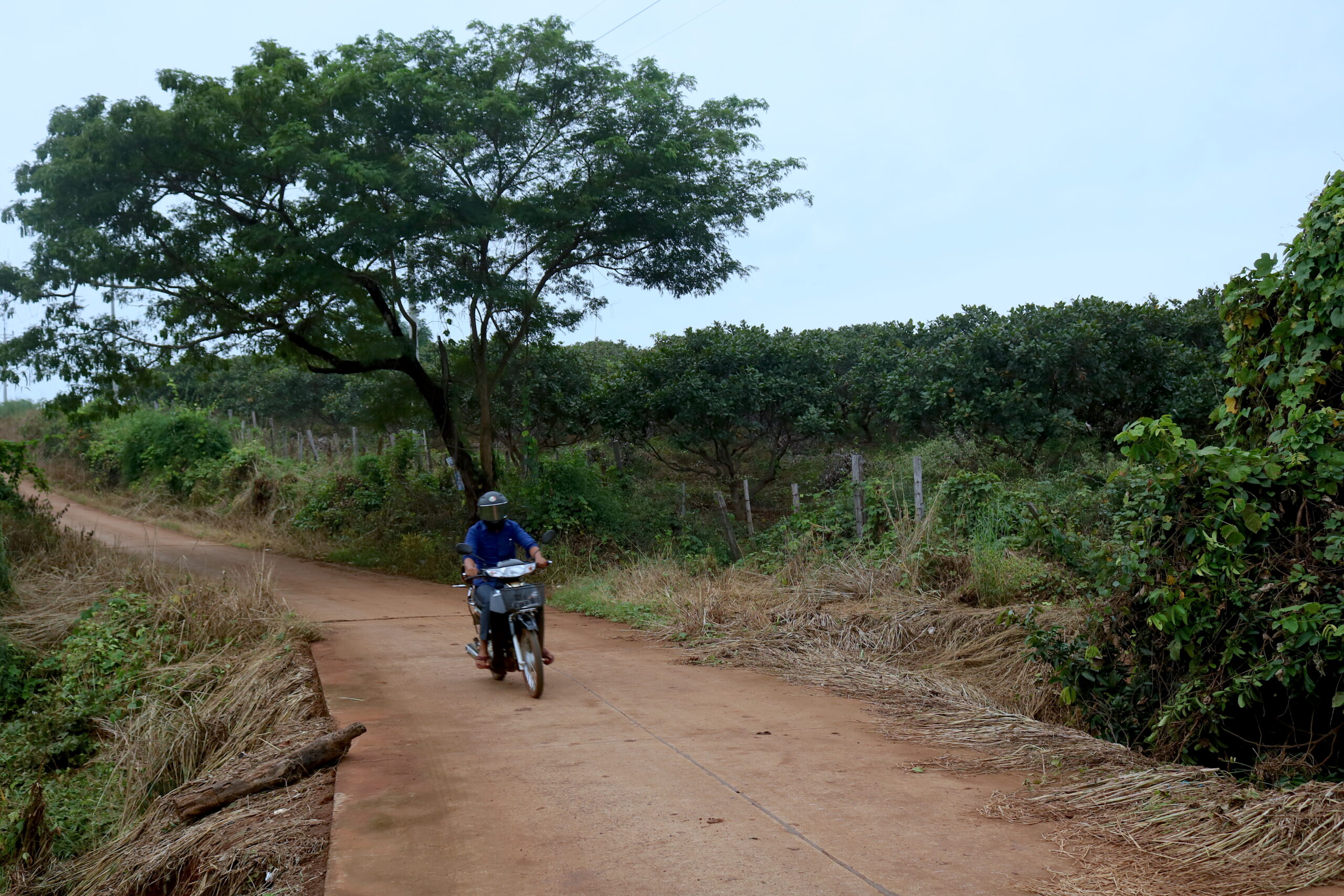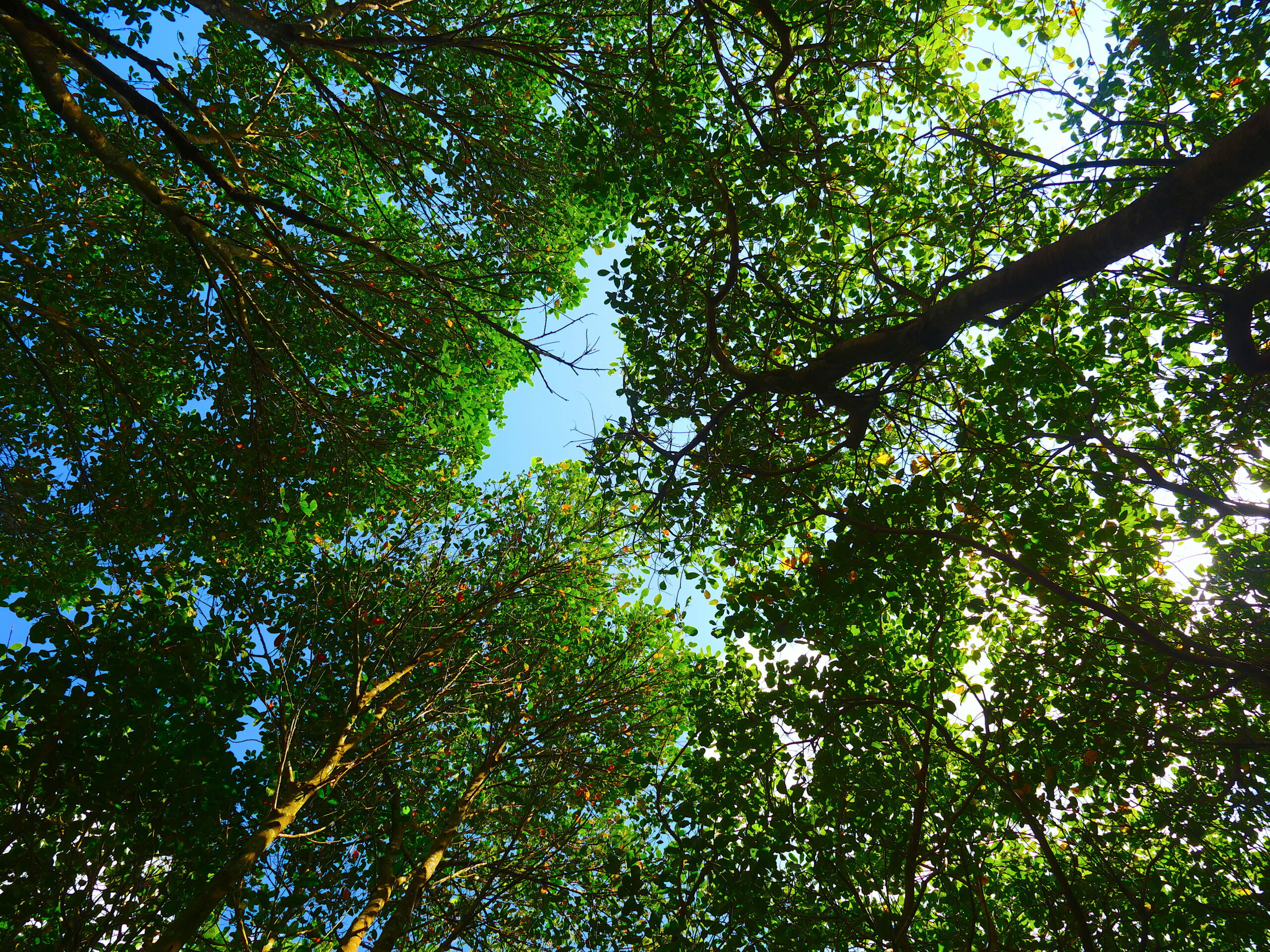Champa Jeg first heard of a curious new plant called the cashew in Cambodia’s Ratanakiri province around the time the last occupying Vietnamese troops departed in 1989.
After collecting some cashew fruits from a nearby farm, Jeg planted 40 seeds alongside the rice fields at his home in Svay village, north of the provincial capital Banlung.
“The idea was to plant it for fun since it didn’t cost anything,” the 68 year old said. “At least we can eat its fruit.”
The cashew trees matured several years later and a man gave Jeg, an ethnic Kreung, 7 million riel for the harvest, about $1,750.
“After people bought my cashews, I realised it has value and started to grow more cashew trees,” Jeg said. “Prior to cashew, no one ever came to buy what we planted in the village. It was just to eat among the family, not to sell or anything.”
The cashew emerged as one of northeast Cambodia’s favourite products by the early 2000s, among a boom in cash crops that radically altered how the ethnic minority highlanders managed their lands and local economies following an end of decades of turmoil in the Kingdom.
Widely credited as the first to plant cashews in his commune, an administrative term for a group of villages, Jeg distributed his seeds to neighbours, a spontaneous process mirrored across the region and driven by Vietnamese demand once the crop’s profitability caught on.
“We saw that [Jeg] earned profit from his cashews,” said Lang Out, a Kreung elder from a neighbouring village. “That was why some people went to work for him in exchange for the seed. Some with money bought it from him.”

Between 2014 and 2018, Cambodia was the world’s seventh highest exporter of raw cashew nuts, the UN reported. The Cashew Nut Association of Cambodia calculates there are about 500,000 hectares (1.2 million acres) of land being used to cultivate cashews. In recognition of how central the crop has become to farmers, the Kingdom is finalising a national cashew nut policy to improve its domestic production.
“The whole shift to cashew is part of a larger shift to private property and capitalism,” said Dr Jonathan Padwe, who has studied Ratanakiri agriculture in his work as a University of Hawaii associate professor of anthropology.
Against a background of geopolitical transitions in the 1990s, the cashew was the right crop at the right time to benefit from the globalism entering Cambodia.
Believed to have originated in central Brazil and spread to Asia in the 16th century, unprocessed cashew fruits are red and apple-shaped. The hanging, bulky nut is protected by a burning acidic substance when opened, leading most farmers to avoid sampling this part of their product.
When Padwe began his Ratanakiri research in 2005, he brought a bag of salted cashew nuts to show ethnic Jarai communities who were cultivating cashew plants on the border of Vietnam. The farmers did not recognise the processed food. The cashew fruits raised by the Cambodian highlanders typically end up in Vietnam for refining and export.
Vietnam’s cashew craze began under the 1986 Doi Moi economic liberalisation programme, leading the country to become the world’s leading exporter of cashews by the early 2000s. Vietnam now produces more than 60% of the world’s supply.
Farmland needed to raise cashew trees was increasingly crowded and expensive in Vietnam, leading brokers to Cambodia where the northeast’s fertile lands still remained up for grabs, at least in the eyes of governments and businesses.
The whole shift to cashew is part of a larger shift to private property and capitalism
Cambodian politicians and elites took note of the rich resources. The 1991 Paris Peace Agreements ended an armed conflict between the Khmer Rouge, other Cambodian factions and Vietnam. Cambodia’s highlanders had some experience in regional trade and raising cash crops like sesames before the 1990s. But the accord opened a rampant land and timber rush in the northeast, shrinking available community property.
Planting single cash crops, known as monoculture, has driven deforestation and loss of biodiversity across Cambodia. A newfound ability to make money from the land provided an incentive for farmers to plant more commodity crops such as the cashew. Communities intensified their efforts to get as much value as possible from the smaller areas of available lands by cutting down forests and focusing on crops that were not always beneficial to their local ecosystem.
The cashew is one of many cash crops in the region. For greater long-term profitability, some farmers with the means prefer to invest in rubber trees, which require five to six years to mature. Rubber has its own troubled planting history in the region going back to the French colonial era and the following Sihanouk regime.
Northeast Cambodia’s indigenous communities have traditionally engaged in swidden agriculture, farming plots of rice and other subsistence products for several years before cutting new sections of forest to cultivate. The Cambodian government has said the practice is inefficient, but research suggests swidden agriculture promotes sustainable forest management.
Cambodians could claim forested land simply by clearing it until the 2001 Land Law halted the practice, said Dr Jeremy Ironside, a geography expert who has studied Ratanakiri agriculture. Indigenous communities remained particularly vulnerable to land grabs by speculators claiming fields left unsown to regenerate soil were not being used.
“They couldn’t have fallow [land] any more because people would just come and take the fallow,” Ironside said. “They had to protect their land.”
Indigenous systems of land management were premised on community norms and oral agreements, rather than hard titles and legal agreements, putting them in a precarious position. The collective management practised by highlanders came under pressure from outside forces seeking to purchase or claim their property.
“I never knew that land has value in the way that we can sell it for money,” said Jeg’s neighbor, Ya Lav, who also planted cashews. “But now I know it after seeing people sell their land to earn money. I believe it was around the 2000s when we learned about the value of land.”
Cashew trees provided communities with opportunities to pin down and protect land by serving as clear boundaries, even if it meant cutting down forest growth they otherwise might not use. The trees also became popular because they typically require little attention or labour.
“It was not hard, all I did was put the seeds in the land and remember [their location],” Jeg said.

For some, the cashew has provided an economic foothold, enabling successful farmers to hire seasonal migrant Khmer labourers to harvest their crops. Recognising the nut’s growing prominence, the Kingdom’s forthcoming cashew policy is expected to improve cultivation and develop necessary infrastructure.
Cambodia has four large processing factories, according to cashew association country director Uon Silot, who hopes to increase the number of operations.
“I want to see more factories to support local farmers,” said Silot, who believes the industry is poised for further growth in Cambodia through investments to cultivate higher quality seeds and improve crop yield. “The government should help to cut down the complexities of exporting cashew or cashew products. If we want to run a small cashew factory we have to go through at least seven institutions, which gives people headaches.”
As Silot considers how to harness the cashew’s success and debates continue over the environmental impacts of industrial production and deforestation, Jeg spends his days in the large home he earned through his timely entry into the cashew economy. Recalling how he buried the millions of riel from his first crop sale in a plastic bag behind his house, Jeg remains focused on the cash he and his neighbors have earned.
“I think planting cashews changed people’s lives for the better,” Jeg said. “The landscape in Ratanakiri has changed partly because of the cashew seeds I gave them.”
This article was updated 5 November 2021.


